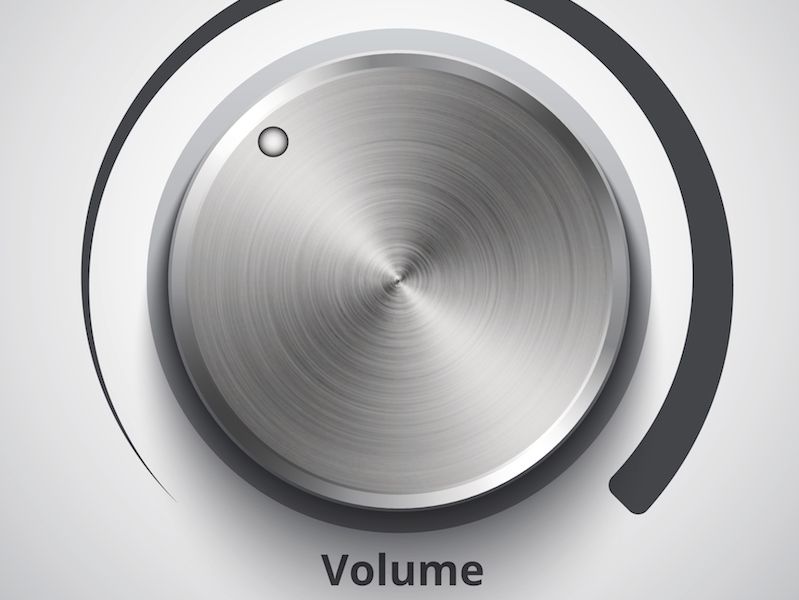
Have you ever gone to the beach and noticed one of those “Beware of Shark” warnings? It’s not really a sign you ignore. A sign like that (particularly if written in big, red letters) may even make you rethink your swim altogether. Inexplicably, though, it’s harder for people to heed warnings about their hearing in the same way.
Recent research has found that millions of individuals neglect warning signs regarding their hearing (this research exclusively looked at populations in the United Kingdom, but there’s little doubt the concern is more global than that). Part of the challenge is awareness. It’s rather intuitive to be scared of sharks. But most people don’t have an overt fear of loud sounds. And how do you know how loud is too loud?
We’re Surrounded by Dangerously Loud Sounds
It’s not just the machine shop floor or rock concert that are dangerous to your hearing (although both of those venues are, indeed, dangerous to your hearing). Many common sounds can be harmful. That’s because exposure time is as hazardous as the volume. Your hearing can be injured with even low level noises like dense city traffic if you experience it for more than two hours at a time.
Read on to find out when sound becomes too loud:
- 30 dB: Normal conversation would be at this sound level. You should be just fine around this volume for an indefinite time period.
- 80 – 85 dB: An air conditioner, heavy traffic, and a lawnmower are at this volume. After about two hours this level of sound becomes dangerous.
- 90 – 95 dB: Think of the noisiness of a motorcycle. 50 minutes is enough to be harmful at this volume.
- 100 dB: An oncoming subway train or a mid-sized sports event are at this volume (of course, this depends on the city). 15 minutes of exposure will be enough to be unsafe at this volume.
- 110 dB: Do you ever crank the volume on your earpods up as high as it will go? That’s normally around this sound level on most smartphones. This level of exposure becomes dangerous after only 5 minutes of exposure.
- 120 dB and over: Any sound over 120 dB (think loud rock concerts or very large sporting events) can bring about immediate injury and pain in your ears.
What Does 85 dB Sound Like?
Generally speaking, you’re hearing is in danger when you’re dealing with any sound 85 dB or louder. But it can be difficult to know how loud 85 dB is and that’s the issue. It’s not tangible in the way that a shark is tangible.
And that’s one reason why hearing warnings frequently go neglected, especially when the sound environment isn’t loud enough to cause pain. There are a couple of possible solutions to this:
- Get an app: Your ears can’t be immediately protected with an app. But there are several free apps that can work as sound level monitors. Injury to your hearing can occur without you realizing it because it’s tough to know just how loud 85 dB feels. The solution, then, is to have this app open and keep track of the sound levels around you. This can help you establish a sense for when you’re entering the “danger zone” (Or, the app will simply tell you when things get too noisy).
- Adequate training and signage: This particularly pertains to the workplace. Training and signage can help reinforce the significant risks of hearing loss (and the advantages of hearing protection). Also, just how loud your workplace is, can be made clear by signage. Helping employees recognize when hearing protection is recommended or required with appropriate training can be very helpful.
If You’re in Doubt, Protect Yourself
No app and no signage will ever be flawless. So take the time to safeguard your ears if you have any doubt. Over a long enough period of time, noise damage will almost certainly create hearing issues. And nowadays, it’s never been easier to damage your ears (all you need to do is turn your earpods up a little too high).
You shouldn’t raise the volume past half way, especially if you’re listening all day. You require noise cancellation headphones if you are constantly cranking up the volume to block out background sound.
That’s why it’s more significant than ever to identify when loud becomes too loud. Increasing your own understanding and awareness is the key if you want to do that. It isn’t difficult to reduce your exposure or at least wear hearing protection. That starts with a little recognition of when you need to do it.
Today that should also be easier. Particularly now that you understand what to be aware of.
Schedule a hearing exam right away if you think you may have hearing loss.
